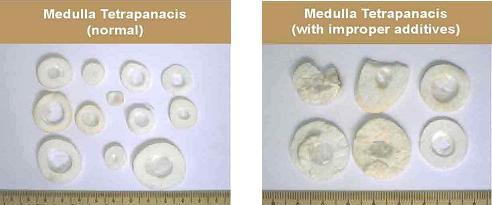Herb Safety - Herbal Materials Safety & Improper Additives
Herb Safety
Herbal Materials Safety & Improper Additives
Overview
Safety, efficacy, and quality are the recognized standards for evaluating medicinal products. There has been a long history of use of herbal medicines and Traditional Chinese Medicine. In recent years, the unique pharmacology and clinical experiences of herbal medicine has gradually gaining attention.
The quality of natural herbal material may be influenced by various factors such as species, planting, harvesting seasons, storage, and transportation. The quality of the herbal materials is critical to the safety and efficacy of the botanical product. Consequently, the CMC (Chemistry, Manufacturing, and Control) of concentrated herbal extracts is regarded as the core technology of Production and Research & Development.
Improper Additives
Traditional Chinese medicinal herbs used to be sourced from the wild. However, due to the changes of time and environment, around 40% of modern medicinal herbs used now are from cultivated sources. The cultivation of herbs brings along safety issues of modern agriculture, such as pesticide residues, chemical fertilizers, pest damage, and industrial pollution. Traditional herb growers were often from specific regions of China or specific ethnic groups, and had profound knowledge of medicinal herbs. Nowadays, medicinal herbs are categorized as agricultural by-products in China. Besides growing and collecting medicinal herbs, some farmers also cultivate economic crops like fruits and vegetables. The persistence of this specialized profession is far from what it used to be in the past.
Medicinal herbs are considered a kind of commodity, using adulterated and substituted herbs is very common. The situation raised grave concerns over the impact on health care and treatment. In recent years, the most serious problems include improper addition of coloring agents, and substances to increase the weight of the herb. Since 2005, the National Drug Regulatory Agency of China has consistently discovered substances, such as talc, magnesium sulfate (MgSO4) and barium sulfate (BaSO4), were added to the medicinal herbs to increase the weight of the herbs to gain higher profit.
In the past few years, Sun Ten has invested a lot of manpower, resources, and money on managing and control of herbal materials safety. By using Ion Coupled Plasma Mass Spectrometry (ICP-MS), we are able to analyze and study trace elements in herbal materials. In addition to being able to analyze large quantities of herb samples, ICP-MS can also test for 70 types of metal elements simultaneously. The sensitivity of this instrument is much higher than other commonly used heavy metal testing instrument. In our study, we can utilize IPC-MS to verify that some herb samples indeed contained improper additives, which cause abnormally high levels of metals. The following are examples from the study:
I. Medulla Tetrapanacis (Tong Cao)
In the herb samples of Medulla Tetrapanacis (Tong Cao) bought from the herb markets in Taiwan, a white crystalline substance is found in cross sections of the plant tissue under the microscope inspection. After using IPC-MS to analyze the herb sample, the test result showed the amount of aluminum (Al) is 13 times higher than normal, along with excessive levels of barium (Ba), demonstrating that improper substances have been added to the herb. Aluminum is poorly absorbed in the intestines; when excessive amounts are consumed, it affects the absorption and metabolism of the medicine.


II. Radix Astragali (Astragalus)
for members only
III. Flos Carthami (Hong Hua)
for members only
Join our member to get full-text article! Join Free!